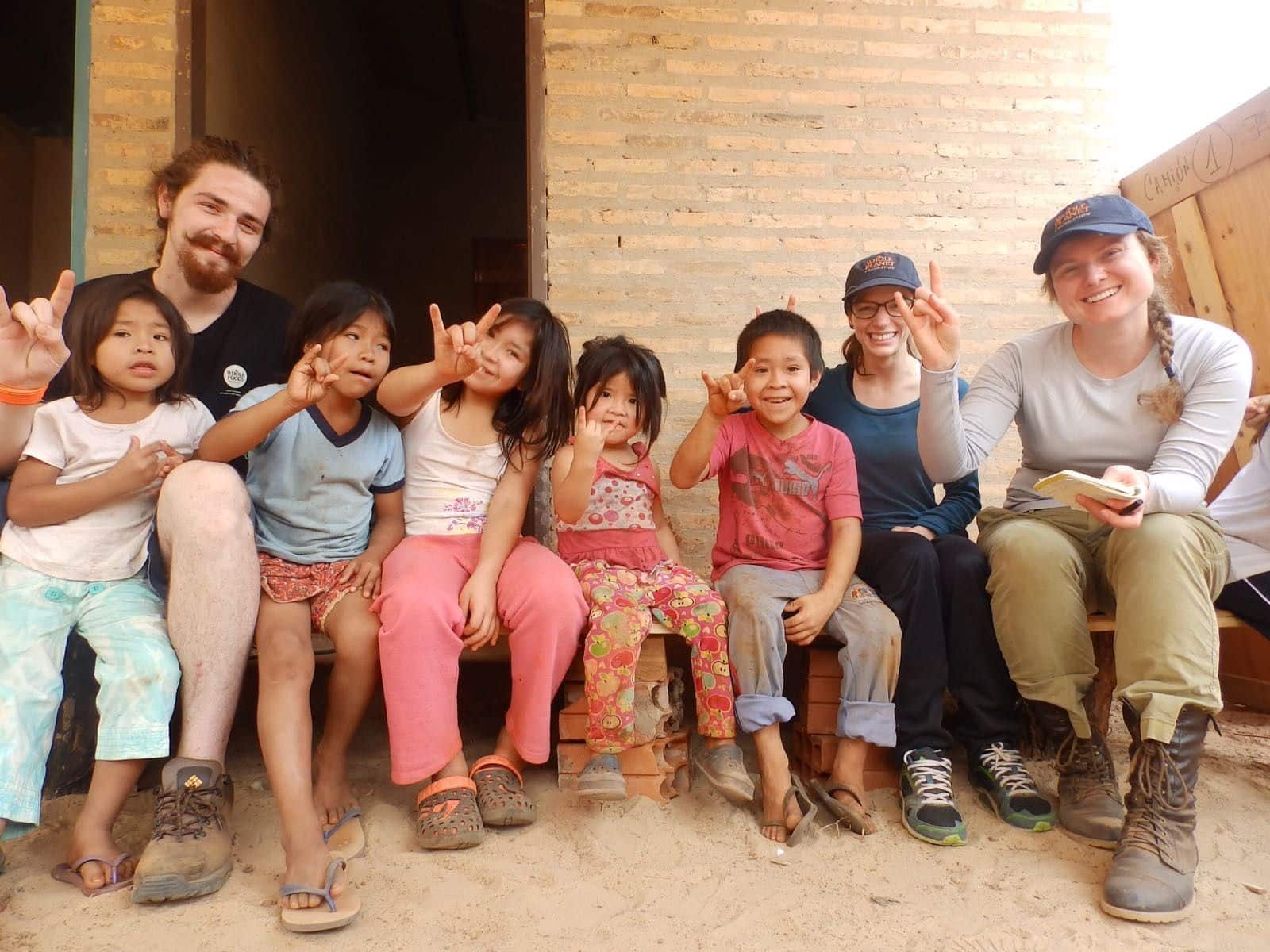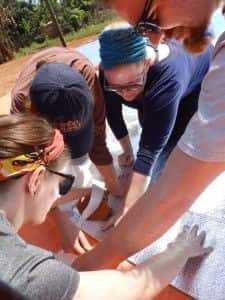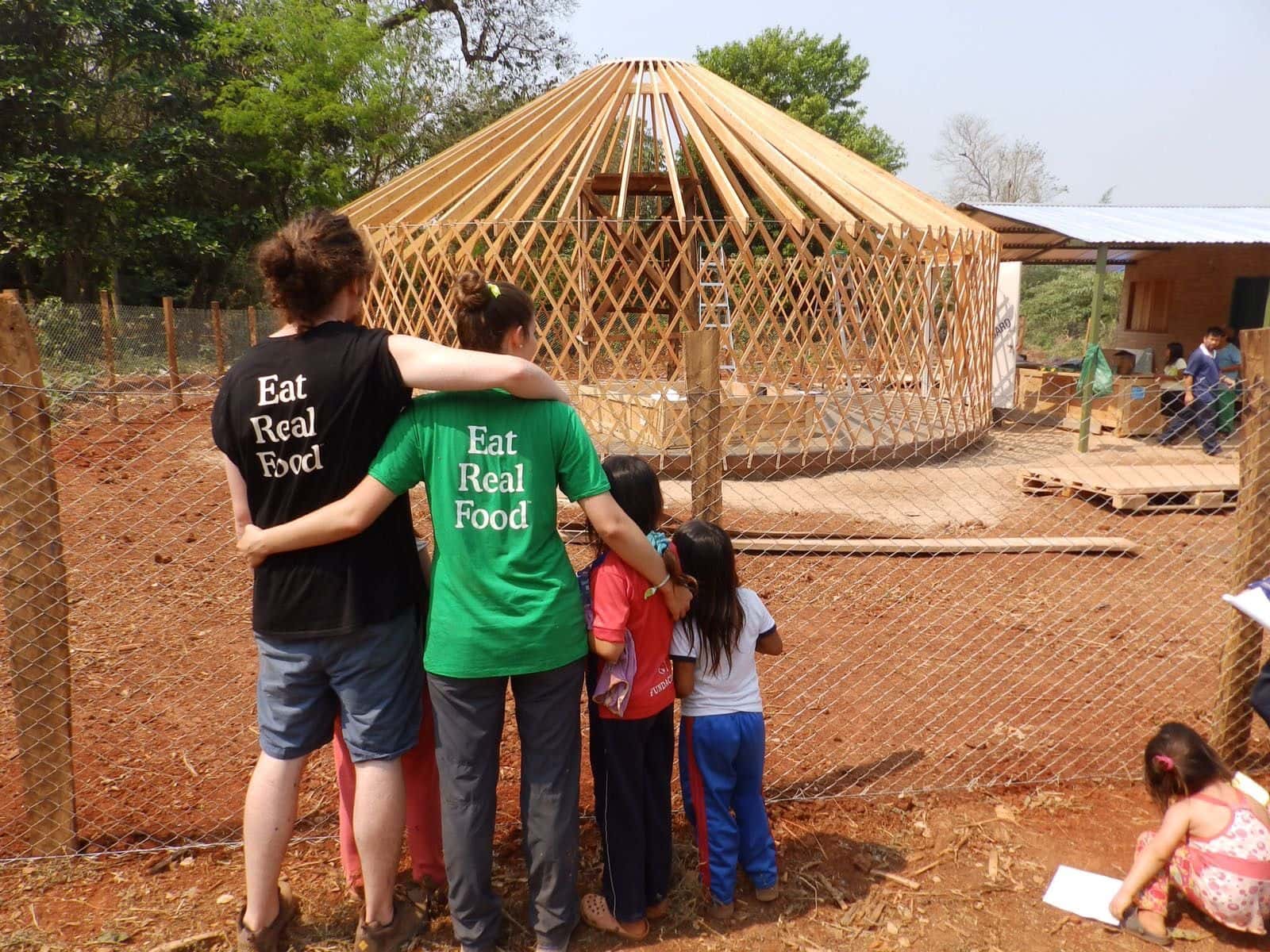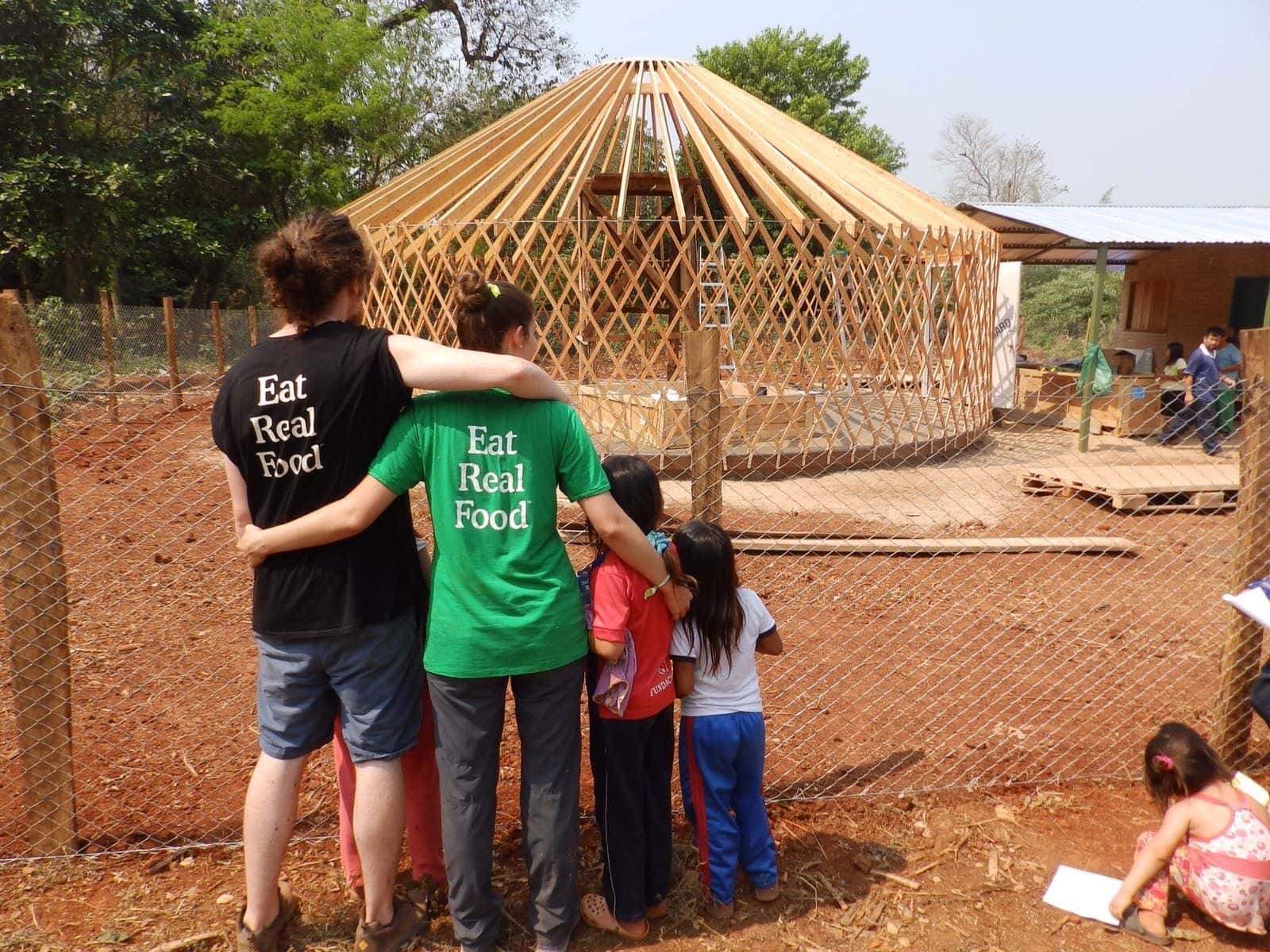This guest blog comes to us from Adelle Housker, who visited Paraguay on the Whole Foods Market® Team Member Volunteer Program in September 2017.
“When it’s really hot, that sometimes happens,” said our guide, Maria del Mar. The lights and air conditioning died while we were eating lunch at a restaurant called La Vienes in the San Lorenzo strip mall where our community liaison, Nelson Garay, was buying additional supplies for the yurt construction at Ferrex (Paraguayan Home Depot). It was wintertime in the southern hemisphere. Maria explained that she runs a race every year at this time when it’s usually “so cold, ten degrees Celsius.” (A fellow volunteer, Sal, translated, “Fifty-ish degrees Fahrenheit.”) However, from the news popping up on Maria’s phone – participants perishing from heat stroke – it wasn’t hard to believe that so far, it was the hottest day of the trip: 107 degrees Fahrenheit.
Luckily that particular Sunday we were in the air-conditioned van, travelling from the capital Asunción – where we’d spent the first half of the Whole Foods Market Team Member Volunteer Program – to Curuguaty, a city on the edge of the Mbaracayú Reservation, where we commuted every day during our stay with the Aché Tribe.
The flat palm savannah gave way to heavily forested hills, the incline of which proved a little too much for the van, which began to smell of burnt tires. Marco, our Discover South America guide, slid open the doors. Utter silence filled the back. He cheerfully explained that we got an opportunity to stretch while our driver Cesar would be checking the water level of the radiator.

We had no choice but to hope for the best. Walking on the shoulder, slowly ambling as motorcycles sped past, a fellow volunteer, Jill, exclaimed, “Uff da!”
“Jill, where did you learn that word? I haven’t heard that word in years!” I exclaimed, having left my hometown in the Midwest over two years ago.
“From my days in Minnesota,” she explained.
Marco pointed out the Cordillera Hills. We passed a large white cross, and he explained that pilgrims make the ten-kilometer trek from the base of the hill to this cross every December. He also mentioned that these pilgrimages take place at night because of the heat.
We got back to the van, relieved to find that were not stranded, and continued on as planned to our destination. Between Carlos in the driver seat and Marco in the passenger seat, was wedged a guampa (gourd cup) and bombilla (straw). Inside this cup was a kind of tea – yerba mate. It was this tea that was responsible for bringing eight Whole Foods Market Team Members to the middle of this vibrant, incredible country on an adventure that would change our lives.
Though they speak Guaraní, the Aché are not ethnically Guaraní. After a half-century of dealing with encroaching developers and illegal loggers, the Aché were finally permitted to resettle the land in 2003, and Guayakí partnered with the hunter-gatherers to help them learn a new skill: crop cultivation. With this skill, they have been able to turn a profit from the jungle they wished to preserve. The Aché Food Sovereignty Project supported by Guayakí provides food to the community and a supply of yerba mate, the caffeinated plant Guayakí purchases from the Aché to export to U.S. retailers like Whole Foods Market.
Yerba Mate is a tree belonging to the holly family, and because of its three xanthines – not only caffeine, but theobromine and theophylline – it is prized for the sustained energy an infusion of its leaves provides. Its seeds become viable after passing through the digestive tract of birds like toucans, and so it was difficult for the Jesuit missionaries to find a way to cultivate it in the 17th century. However, they eventually discovered that a germination period of a full nine months of continually moistening the seed would do the trick. The plant grows beneath the canopy of sub-tropical jungles.
beneath the canopy of sub-tropical jungles.
Though they can be grown in plantations under direct sunlight, Alex Pryor (the co-founder of Guayakí, whom we met and who was on the scaffolding sweating under the intense sun and drinking the mate along with the rest of us volunteers) was expressly against such cultivation techniques. Having grown up drinking the beverage in Argentina, he got the idea for introducing the drink to the United States when he came to California to study, and found a sun-kissed culture that would be “perfect” for it.
During our visit, we were allowed to plant yerba mate saplings in dirt gathered from the forest floor. Volunteers pressed the delicate little plants into small bags, rousing up a friendly competition for who could plant the most the fastest. Scooping up the cool dirt with our hands, we chatted excitedly about – for example – the exoskeleton we’d found in the soil, our impressions of the cute toddlers that would come up to hug us, the three University students and Guayakí teams from Argentina and Brazil who had come to join us, or the surprising speed with which we (none of us being carpenters or particularly handy) had managed to build a yurt.
With the help of Milo Demandre, a volunteer from Patagonia, and the Aché themselves, we built the yurt that was to serve as a Montessori school for the tribe’s younger members in just three days. The construction of the yurt was a perfect example of Guayakí’s relationship with the Aché. The idea to build a yurt and train teachers so that younger children of the tribe might have access to education came from a series of dialogues between Guayakí and the Aché, an open-minded give-and-take that is characteristic of Alex’s brand of collaboration.

We gathered the bags of saplings into the nursery, under a green mesh canopy stretched across wooden posts and fenced off to protect from pests. Later, we went on a walk through the jungle. As they went, children from the tribe picked off huge leaves the size of a grown man’s torso, and fashioned them into hats which they crowned us with. Nelson Garay pointed out the mature yerba mate trees they’d planted. The university students (one of whom was Nelson’s son) delicately unwound any vines from their trucks with machetes. We made a stop at a watering hole. The children jumped in from the high muddy banks, and the rest of us cooled off, pressing the water against our foreheads and necks.
Later, we met Alex’s parents, who drove up to participate in the tour and meet with this cheerful gathering. His father discussed an array of topics from ecology to history; and his mother, who oversaw the training of the Aché’s Montessori teachers, gave a detailed and fascinating account of the background context. They were refined, dressed in white linen and wide-brimmed hats. Though roughly my grandparents’ age, they had no qualms about joining us in the rainforest. We were to meet several characters like that throughout our brief two weeks in Paraguay – larger than life.


